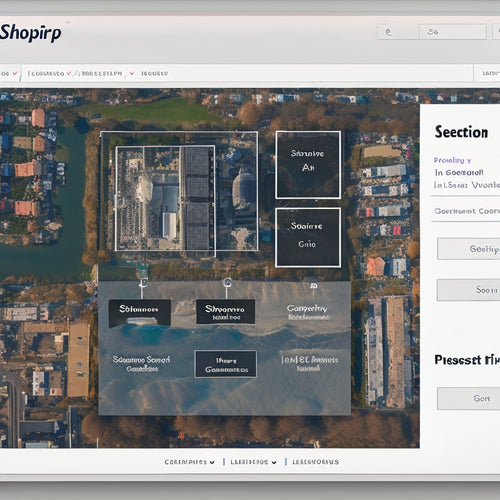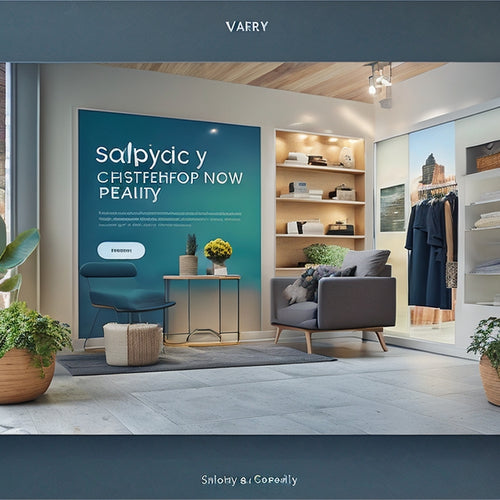
Revolutionizing E-Commerce: Mastering User Experience Strategies
Share
Revolutionizing e-commerce requires a laser-like focus on creating seamless, personalized, and engaging user experiences that drive conversions, with a projected $840 billion in U.S. sales hinging on it. By leveraging data-driven strategies, e-commerce businesses can prioritize mobile optimization, create visually appealing designs, and foster customer engagement. Streamlining navigation and discovery, optimizing product and checkout experiences, and building trust are also essential. As the industry continues to thrive, businesses that master user experience strategies will gain a competitive edge. Unveil the secrets to maximizing e-commerce success and discover the key elements to propel your business forward.
Key Takeaways
• Mastering user experience strategies is crucial for e-commerce success, with sales projected to reach $840 billion in the U.S.
• Prioritizing mobile optimization is key, as mobile devices drive e-commerce traffic, and simplifying navigation reduces friction.
• Well-designed product pages with visual storytelling increase add-to-cart rates, while seamless transactions reduce cart abandonment.
• Building trust is essential, with displaying security badges, clear order summaries, and multiple customer support channels driving conversions.
• Data-driven strategies and personalization are vital, as they enhance customer engagement, loyalty, and ultimately, revenue growth.
E-commerce Sales Trends and Insights
As the e-commerce industry continues to thrive, with sales projected to reach $840 billion this year in the U.S. alone, understanding the latest trends and insights is essential for businesses to stay ahead of the competition.
Mobile devices are driving e-commerce traffic, but desktop sites still reign supreme when it comes to higher purchase values and lower cart abandonment rates. To capitalize on this trend, businesses must prioritize mobile optimization, ensuring seamless customer engagement across all devices.
Personalization is also key, with data-driven strategies helping businesses tailor experiences to individual customers. By leveraging these insights, e-commerce businesses can create tailored experiences that drive sales, boost customer satisfaction, and stay ahead of the curve.
Designing for Conversion and Profit
By leveraging the insights from e-commerce sales trends and prioritizing mobile optimization, businesses can now focus on designing their websites to maximize conversions and profits, starting with the foundation of a seamless user experience.
To boost conversion rates, businesses must employ effective conversion tactics, such as creating a visually appealing design that draws customers in. Profit maximization is also essential, and can be achieved by fostering customer engagement through personalized recommendations and social proof.
A well-designed website should strike a balance between visual appeal and functionality, guiding customers effortlessly through the buying process. By doing so, businesses can increase conversions, profits, and ultimately, customer satisfaction.
Streamlining Navigation and Discovery
Nearly 80% of online shoppers cite easy navigation as an essential factor in their e-commerce experience, underscoring the importance of streamlining navigation and discovery to drive conversions and customer satisfaction. A well-designed e-commerce site should make it effortless for customers to find what they're looking for, and that's where simplifying search and enhancing filters come in.
| Navigation Strategy | Benefits |
|---|---|
| Simplifying search | Reduces friction, increases discoverability |
| Enhancing filters | Facilitates product comparison, boosts relevance |
| Implementing autocomplete | Speeds up search process, reduces errors |
| Providing faceted search | Offers granular control, increases precision |
| Using breadcrumbs | Enhances navigation, reduces cognitive load |
Optimizing Product and Checkout Experiences
With streamlined navigation and discovery in place, e-commerce sites can now focus on optimizing product and checkout experiences to drive conversions and customer satisfaction. A well-designed product page can increase add-to-cart rates by up to 20%. Visual storytelling plays an essential role here, as high-quality product images and compelling copy can transport customers into the world of the product, making them more likely to make a purchase.
Moreover, seamless transactions are key to reducing cart abandonment rates. By minimizing form fields, offering guest checkout options, and providing clear error messages, e-commerce sites can create a frictionless checkout experience that delights customers and drives conversions.
Building Trust and Driving Conversions
E-commerce sites can greatly boost conversions and customer loyalty by establishing trust with their customers, as a staggering 70% of online shoppers abandon their carts due to trust issues. By implementing effective trust building strategies, e-commerce sites can increase conversions and drive sales.
Here are three key tactics to contemplate:
-
Display security badges: Showcase trust badges, such as SSL certificates, to reassure customers that their personal and payment information is secure.
-
Provide clear order summaries: Offer a detailed breakdown of the order, including product details and fees, to build transparency and trust.
-
Implement customer support: Offer multiple channels for customer support, such as live chat, email, and phone, to demonstrate a commitment to customer satisfaction and resolve any concerns.
Frequently Asked Questions
How Do I Ensure a Seamless User Experience Across Different Devices?
'Crafting a seamless user experience is like baking a perfect cake, requiring precise ingredients. Guarantee cross-device compatibility by incorporating responsive design and mobile optimization, thereby creating a user interface that's as smooth as butter, regardless of device.'
What Is the Ideal Balance Between Content and Whitespace on E-Commerce Sites?
When striking the ideal balance between content and whitespace on e-commerce sites, prioritize a clear visual hierarchy and design that guides the customer's eye, ensuring readability and a seamless shopping experience, while leveraging whitespace to reduce cognitive load and boost conversions.
How Can I Effectively Measure and Analyze User Experience Metrics?
To effectively measure and analyze user experience metrics, track key indicators such as user engagement, conversion rates, and bounce rates, leveraging tools like heat maps and A/B testing to optimize the e-commerce journey.
What Role Does Personalization Play in Enhancing E-Commerce User Experience?
Personalization, via customization and recommendation algorithms, boosts e-commerce UX by 20% by tailoring experiences to individual preferences, increasing engagement, and driving conversions, making shoppers feel seen, heard, and valued - the ultimate retail therapy!
How Can I Stay Up-To-Date With the Latest E-Commerce User Experience Trends?
Staying current with e-commerce UX trends is like riding a wave of innovation, where user engagement and interactive design meet mobile optimization and user behavior insights, ensuring a seamless online shopping experience that's always ahead of the curve.
Related Posts
-

Enhance Your Shopify Store With Top Integrations in 2023
In 2023, online retailers utilizing Shopify have the opportunity to enhance their e-commerce stores through the inte...
-

Adding Sitemap to Your Shopify Store: A Complete Guide
This article aims to provide a comprehensive guide on the process of adding a sitemap to a Shopify store. A sitemap ...
-

What Is the Best Pop Up for Shopify
Pop-up plugins for Shopify have gained widespread popularity due to their ability to enhance user experience and boo...


